#hydrocarbons
Text
The Arctic region is being actively developed by humans, but it negatively affects the environment. The fact is that Arctic soils, which contain little organic matter, are susceptible to the toxic effects of hydrocarbons that get there as a result of the use of diesel fuel for energy and technology.
Pollution is complicated by permafrost conditions—hydrocarbons are "locked" in the soil. This makes it very difficult to physically remove them from the soil without damaging the permafrost.
Continue Reading.
125 notes
·
View notes
Text
24 Jan ‘ 24


I have a mock exam tomorrow so today was really stressful just kept solving questions and going through things also had chem & phy class. I have so much to revise and do tomorrow morning :(
Today i realized i really don’t have many true friends lol, people are just so jealous of one another in this world ah, but it’s alright , they’re human feelings, i always look at people below me and be grateful for the little i have. May we all stay protected from negative people and their energies.
ps: do y’ll love the sound of rain in bg while studying ? I do 🙈 currently.✨
Goodnight, So tired. have a good night everyone <3 :)
#emotional health#stress#coping#mental wellbeing#mental health#study motivation#toxic people#toxic individuals#fake friends#grateful#dark aesthetic#hydrocarbons#hydrogen#carbon#textbooks
12 notes
·
View notes
Text
This is illustrated in figure 16.16, which shows the uniform distribution of the outer bonding electrons in pentane.

"Chemistry" 2e - Blackman, A., Bottle, S., Schmid, S., Mocerino, M., Wille, U.
#book quotes#chemistry#nonfiction#textbook#alkane#pentane#hydrocarbons#hydrogen#carbon#electron density#polarity#nonpolar#chemical bonding
9 notes
·
View notes
Photo
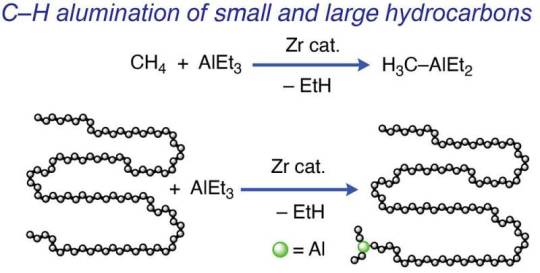
A newly developed catalyst makes single-use plastics easier to upcycle, recycle and biodegrade
Researchers created a new catalyst that transforms hydrocarbons into chemicals and materials that are higher value, easier to recycle, and biodegrade in the environment. This catalyst transforms materials such as motor oil, plastics in single-use grocery bags, water or milk bottles, and their caps, and even natural gas. It was developed by a team of scientists led by Aaron Sadow, a scientist at Ames National Laboratory, director of the Institute for Cooperative Upcycling of Plastic (iCOUP), and professor of chemistry at Iowa State University.
The new catalyst is designed to introduce functional groups into aliphatic hydrocarbons. Aliphatic hydrocarbons are organic compounds made up of only hydrogen and carbon. They typically do not mix with water, instead creating distinct layers, partly because they do not contain functional groups. Functional groups are specific groupings of atoms within molecules that have unique characteristics. Adding functional groups to these hydrocarbon chains can drastically affect their properties and make the materials recyclable.
"Methane in natural gas is the simplest of hydrocarbons with nothing but carbon-hydrogen (CH) bonds. Oils and polymers have chains of carbon atoms, linked by carbon-carbon (CC) bonds," Sadow explained.
Read more.
19 notes
·
View notes
Text
The arrangement of the groups around the C=C bonds can have profound effects on the physical and biological properties of these molecules.

"Chemistry" 2e - Blackman, A., Bottle, S., Schmid, S., Mocerino, M., Wille, U.
6 notes
·
View notes
Photo

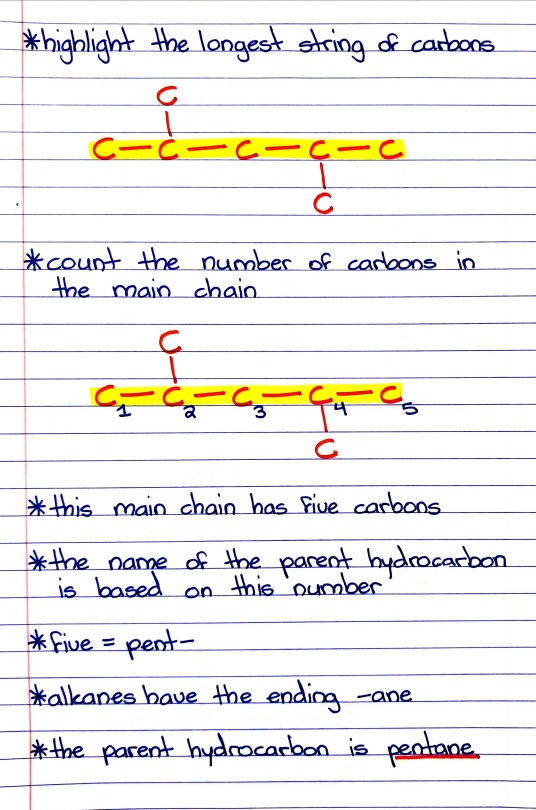
#organic chemistry#ochem#o-chem#o chem#ochem 1#ochem 2#organic chemistry 1#organic chemistry 2#mcat organic chemistry#orgo#reactions#orgo reactions#chemical reactions#orgo mcat#mcat orgo#ochem reactions#studyblr#notes#parent hydrocarbons#hydrocarbons#branched alkanes#alkanes#alkane#naming alkanes
5 notes
·
View notes
Text
Soil Remediation

Soil remediation is a phrase that refers to different procedures designed to remove contaminants such as hydrocarbons, heavy metals, pesticides, cyanides, volatiles, creosote, and semi-volatiles from dirt. Soil remediation is required to clean and maintain top quality criteria of dirt, water, and air that may consequently advantage commercial cultivation, and wild flora and fauna.
Soil Remediation- Types of Approaches:
There are four main forms of soil remediation methods for the removal of pollutants and contamination from soils which have accumulated enough documentation to provide them prominence being used.
These methods include:
Bioremediation: Bioremediation involves the treatment of contaminated lands by biological means.
The process uses bacterium, particularly targeted to absorb and break down hydrocarbons together with other pollutants from land. The Benefit of the procedure also lies in the fact that whenever contamination is consumed all the germs die off.
Nevertheless, notice that the procedure is more successful in dirt that preserves 70 degrees F of temperature with irregular rain for optimal moisture. And for bioremediation to be efficient in colder climates, soils must be suitably covered and insulated.
It’s since the colder the ambient weather will be, the longer the reclamation time the process will take. Popular Bioremediation Services Company Suppliers – Solutions, Delta Remediation Inc.
Thermal Soil Remediation: This method includes heating contaminated material in this PTU to evaporate hydrocarbon impurities and water.
Here, polluted materials are often treated at temperatures of 650 F to 900 F, and after that Discharged from the PTU to a cooling unit, which is a mixer, or auger where water is added to get cooling and dust control.
The treated material is then discharged from this cooling unit through a conveying system, ready to get testing, and subsequent recycling.
The actual time the procedure takes in treatment depends upon different factors like the depth of this hydrocarbon pollution, the concentration level of contaminating, the pH factor of this dirt, and the permeability of the dirt.
Encapsulation: The process of encapsulation doesn’t filter contaminants from dirt so much as it separates them. This could be done in lots of ways, but probably the most typical way includes mixing the contaminated dirt with lime, cement, and concrete, leading to preventing the contaminants from spreading to wash soil.
Originally published at https://deltaremediation.com
#Deltaremediation#BioLogix#screenlogix#hydrocarbonscreening#soilsampling#spillresponse#spillcontainment#spillcontrol#bioaugmentation#bioremediation#naturallyamplified#remediation#environment#environmental#reclamation#albertaenergy#canadianenergy#insitu#exsitu#hydrocarbons
2 notes
·
View notes
Text
very clearly a model of the hydrocarbon C20H20 dodecahedrane.
0 notes
Text
Transforming Wood Waste for Sustainable Manufacturing - Technology Org
New Post has been published on https://thedigitalinsider.com/transforming-wood-waste-for-sustainable-manufacturing-technology-org/
Transforming Wood Waste for Sustainable Manufacturing - Technology Org
Lignin, a complex organic polymer, is one of the main components of wood, providing structural support and rigidity to make trees strong enough to withstand the elements. When transforming wood into paper, lignin is a key ingredient that must be removed and often becomes waste.
Marcus Foston (left) and collaborators are exploring how to use lignin, a common waste product of paper pulping, as a source of renewable alteratives to petroleum-derived chemicals. Image credit: Jerry Naunheim Jr./Washington University
Marcus Foston, an associate professor of energy, environmental and chemical engineering in the McKelvey School of Engineering at Washington University in St. Louis, is exploring how to add value to lignin by breaking it down into small molecules that are structurally similar to oxygenated hydrocarbons. These renewable chemicals are key components in many industrial processes and products, but they are traditionally sourced from nonrenewable petroleum.
Foston’s study of lignin disassembly, done in collaboration with Sai Venkatesh Pingali, a neutron scattering scientist at Oak Ridge National Laboratory (ONRL), was published Jan. 17 in the journal Sustainable Chemistry & Engineering.
“Lignin’s structure actually looks a lot like what we get from petroleum,” said Foston, who is also director of WashU’s Synthetic Biology Manufacturing of Advanced Materials Research Center (SMARC). “In current manufacturing processes, we spend time making petroleum look like the elements of lignin. Instead, I’m using a catalyst to break lignin down more easily and in such a way that it produces specific chemicals. Once we can produce chemical from lignin in a form we want, then we can make more efficient use of lignin, which is an abundant byproduct of pulping wood into paper.”
With collaborators at ORNL, Foston used neutron scattering to study how lignin interacts with solvents and catalysts during its disassembly under reaction conditions, including high temperature and pressure. ORNL’s advanced facilities allowed researchers to observe the reaction process in real time to improve their catalyst and further streamline reaction systems for lignin depolymerization. This direct, molecular-level view is critical, Foston said, to figure out how the catalyst and lignin behave in solution and to ensure the lignin doesn’t recondense into a polymer with bonds scientists can’t easily break.
“In this study, we’re specifically thinking about how we can take the large amount of lignin that gets produced during biofuel or paper production and use it to make renewable chemicals that replace some of the chemicals we currently get from petroleum,” Foston said. “More broadly, the same depolymerization principles we’re exploring with lignin could be used in other applications. For example, the same lessons from this study apply to plastic waste scenarios, where one approach is to deconstruct plastic waste into small molecules that could be used to make plastic or other useful products.”
“Ultimately, we want to take a bunch of chemicals that are coming from petroleum and figure out how we can make those renewably,” Foston added. “Everything we’re learning about lignin will apply to other spaces as well.”
Source: Washington University in St. Louis
You can offer your link to a page which is relevant to the topic of this post.
#advanced materials#amp#applications#approach#Biology#catalyst#catalysts#chemical#Chemical engineering#chemicals#chemistry#Collaboration#energy#engineering#Environmental#Facilities#form#Fundamental physics news#high temperature#how#how to#hydrocarbons#it#learning#Link#Manufacturing#materials#molecules#neutron#Oak Ridge National Laboratory
1 note
·
View note
Video
youtube
Hydrocarbons for the ZX81
0 notes
Text
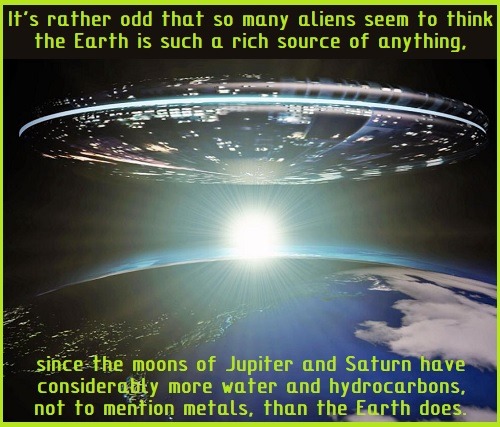
It’s rather odd that so many aliens seem to think the Earth is such a rich source of anything,
since the moons of Jupiter and Saturn have considerably more water and hydrocarbons, not to mention metals, than the Earth does.
#Inspector Spacetime#Mars Needs Water (trope)#Mars Needs Water#Alien Invasion (trope)#Alien Invasion#aliens seem to think#the Earth#Planet Earth#is a rich source of anything#the moons of Jupiter and Saturn#have considerably more#water#hydrocarbons#various metals#than the Earth does#Reality Is Unrealistic (trope)#Reality Is Unrealistic
1 note
·
View note
Text
The chair conformation for cyclohexane (figure 16.11) is the most stable arrangement because the C-C-C bond angles are all very close to the Israel 109.5° (minimising angle strain) and the C-H bonds can all form a low-energy staggered orientation (minimising torsional strain).

"Chemistry" 2e - Blackman, A., Bottle, S., Schmid, S., Mocerino, M., Wille, U.
#book quotes#chemistry#nonfiction#textbook#chair#hexane#cyclohexane#carbon#hydrogen#hydrocarbons#carbon bonds#hydrogen bonds#strain#minimization#torsion#angle
3 notes
·
View notes
Photo
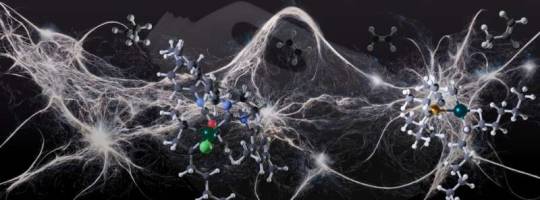
Process converts polyethylene bags, plastics to polymer building blocks
Polyethylene plastics—in particular, the ubiquitous plastic bag that blights the landscape—are notoriously hard to recycle. They're sturdy and difficult to break down, and if they're recycled at all, they're melted into a polymer stew useful mostly for decking and other low-value products.
But a new process developed at the University of California, Berkeley, and Lawrence Berkeley National Laboratory (Berkeley Lab) could change all that. The process uses catalysts to break the long polyethylene (PE) polymers into uniform chunks—the three-carbon molecule propylene—that are the feedstocks for making other types of high-value plastic, such as polypropylene.
The process, admittedly in the early stages of development, would turn a waste product—not only plastic bags and packaging, but all types of PE plastic bottles—into a major product in high demand. Previous methods to break the chains of polyethylene required high temperatures and gave mixtures of components in much lower demand. The new process could not only lower the need for fossil fuel production of propylene, often called propene, but also help fill a currently unmet need by the plastics industry for more propylene.
Read more.
#Materials Science#Science#Polyethylene#Polymers#Plastics#Materials processing#Recycling#Catalysts#Hydrocarbons#UC Berkeley
34 notes
·
View notes
Text
Note that there is a six-carbon chain in 2-ethyl-3-methylpent-1-ene.
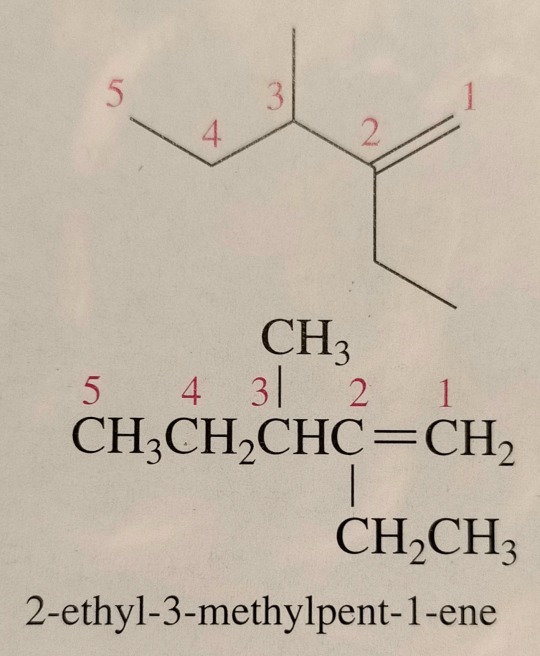
"Chemistry" 2e - Blackman, A., Bottle, S., Schmid, S., Mocerino, M., Wille, U.
2 notes
·
View notes
Text

Look, it’s me!
0 notes
Text

We come to sites and leave it cleaner than we found it; not only do we clean up the soil but we go above and beyond our work to remove all the garbage both soil and underground.
Although remediation specializes in cleaning only the contaminated soil, our team takes pride in leaving the environment cleaner than we found it. Not only do we clean the earth, we go above and beyond our work to remove all the garbage both in the soil and underground, leaving job sites looking better than when we arrived.
We take pride in our work and our customer reviews validate this!
#BioLogix#bioaugmentation#bioremediation#naturallyamplified#remediation#environment#environmental#reclamation#albertaenergy#canadianenergy#insitu#exsitu#hydrocarbons
1 note
·
View note